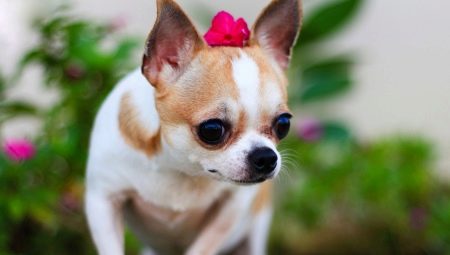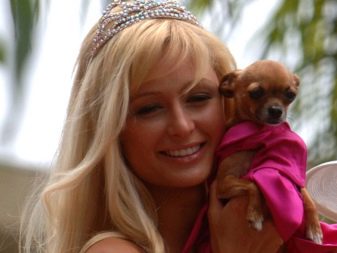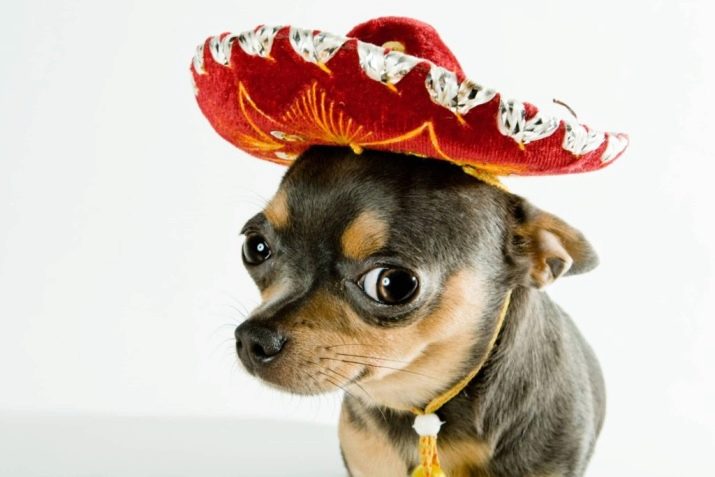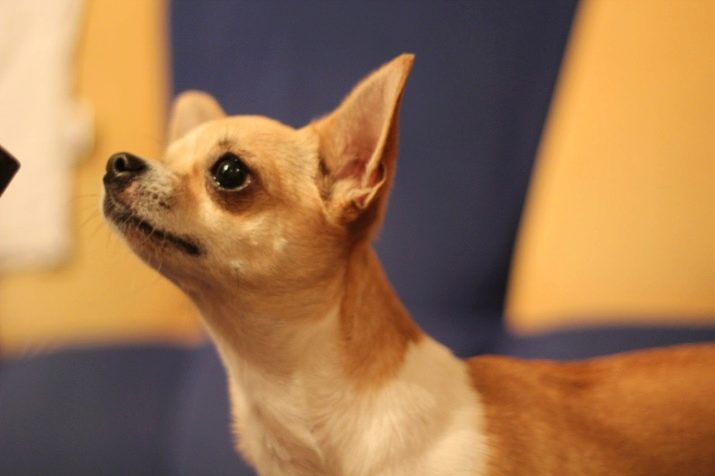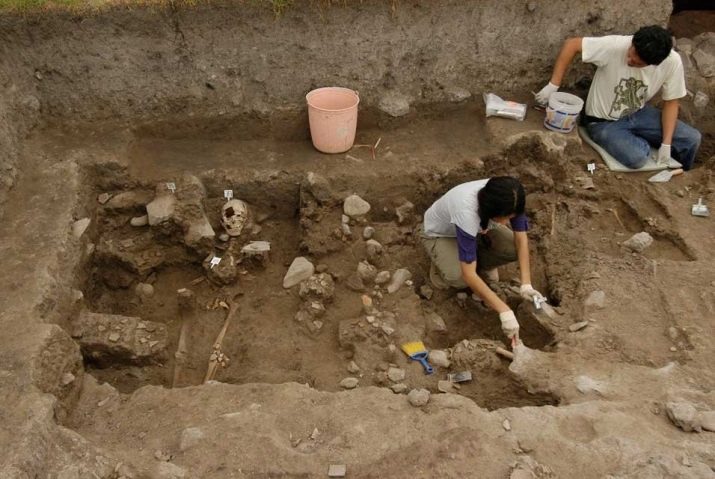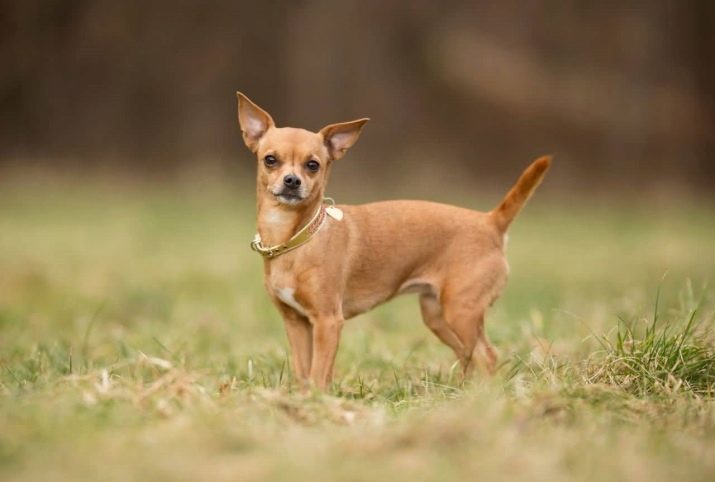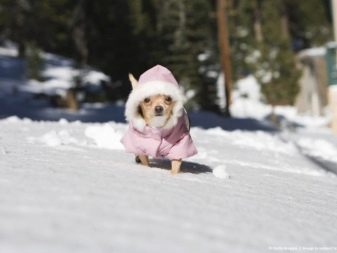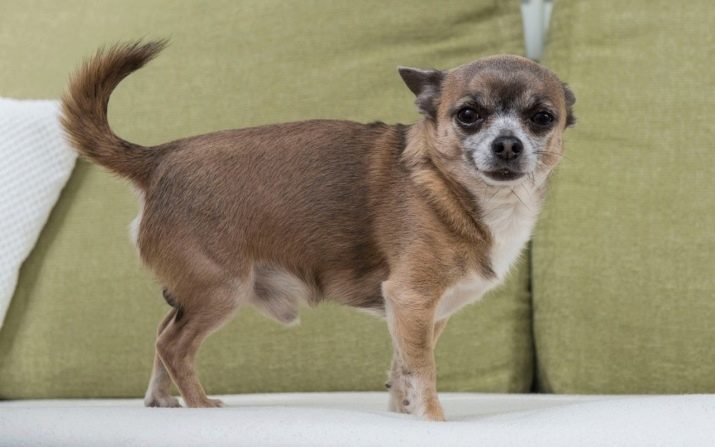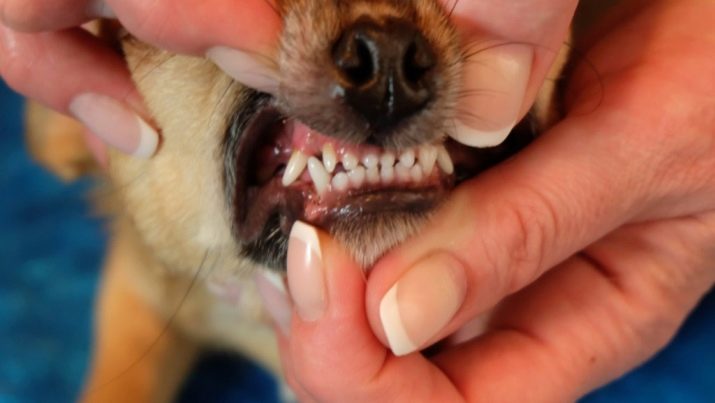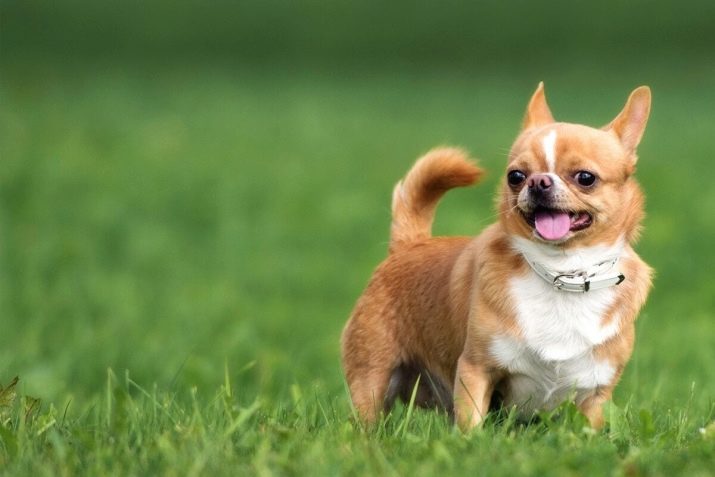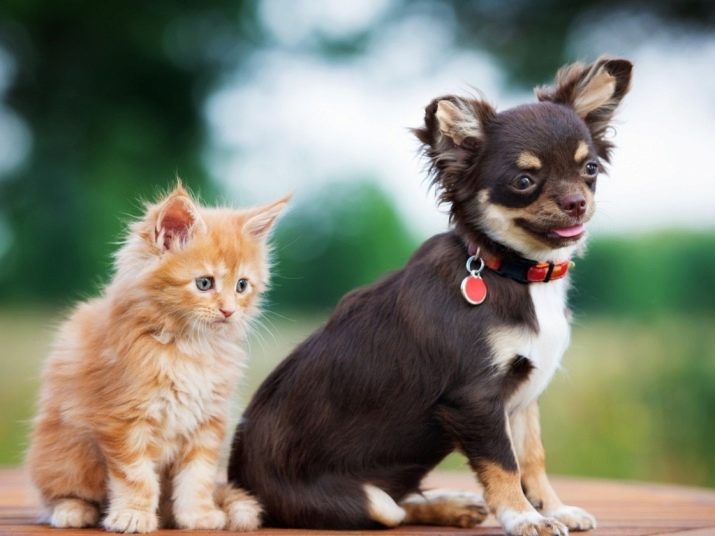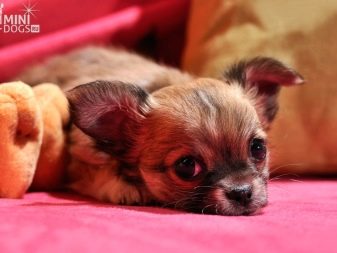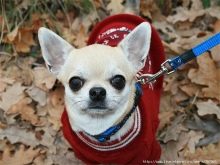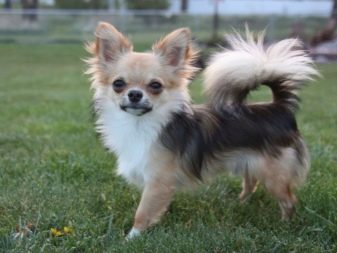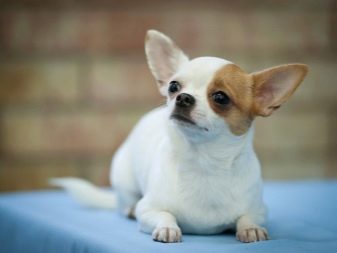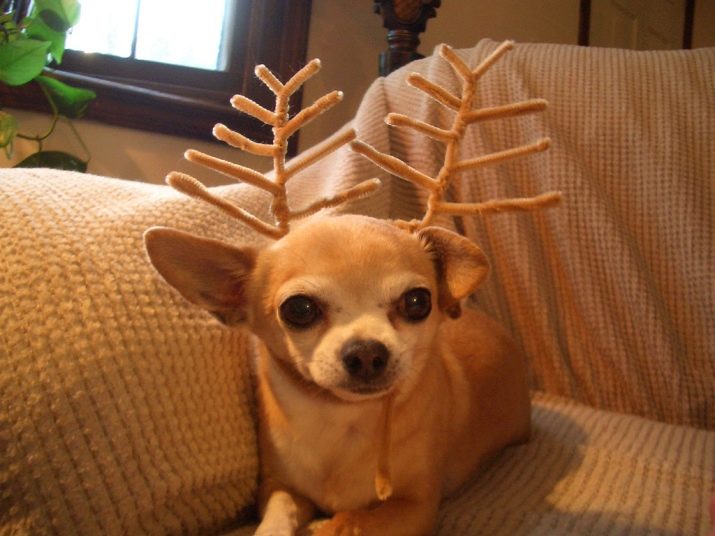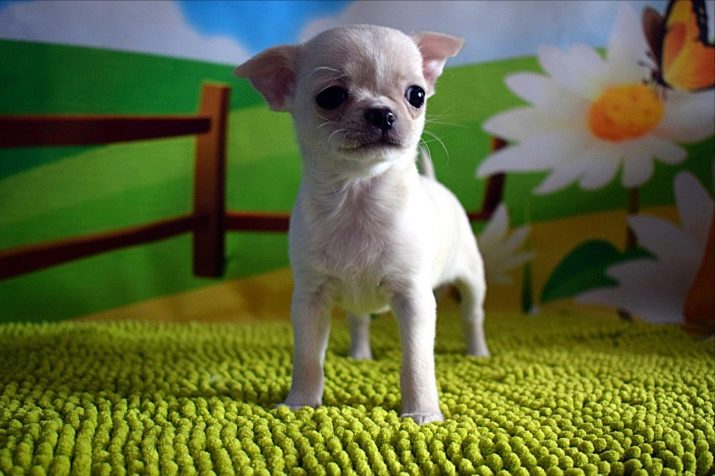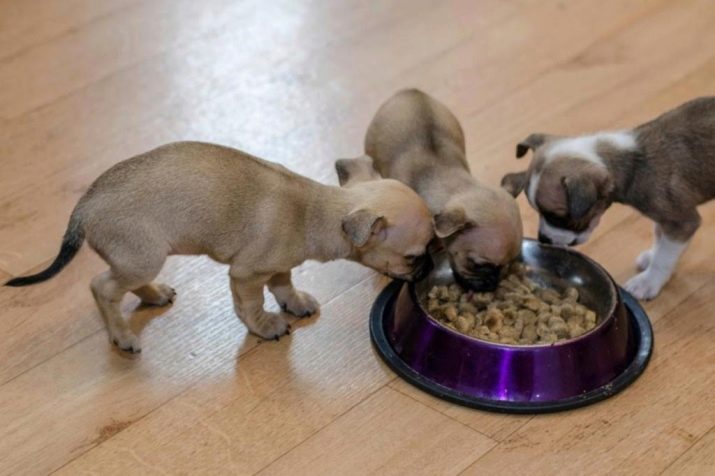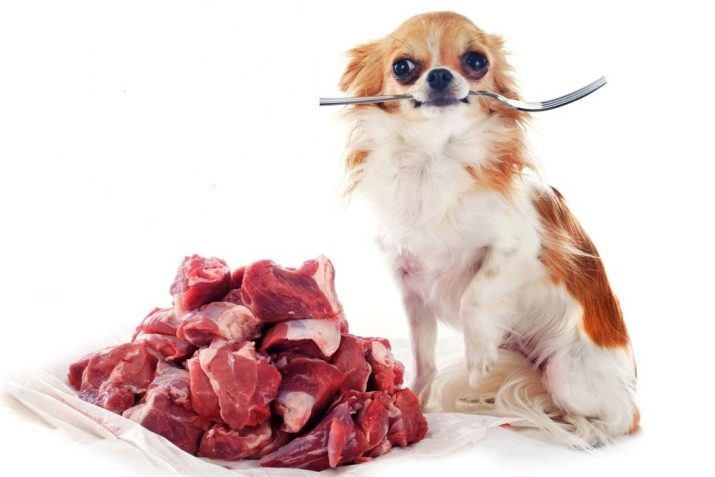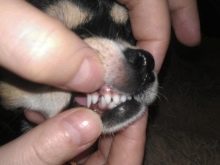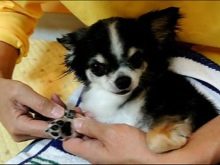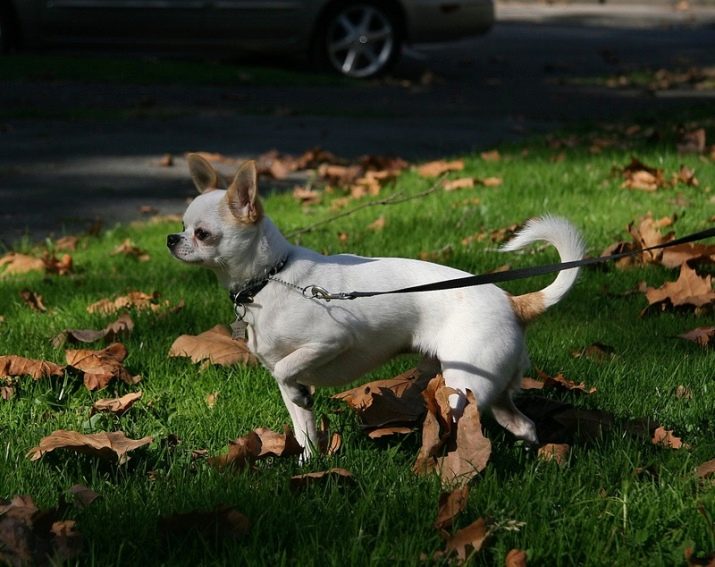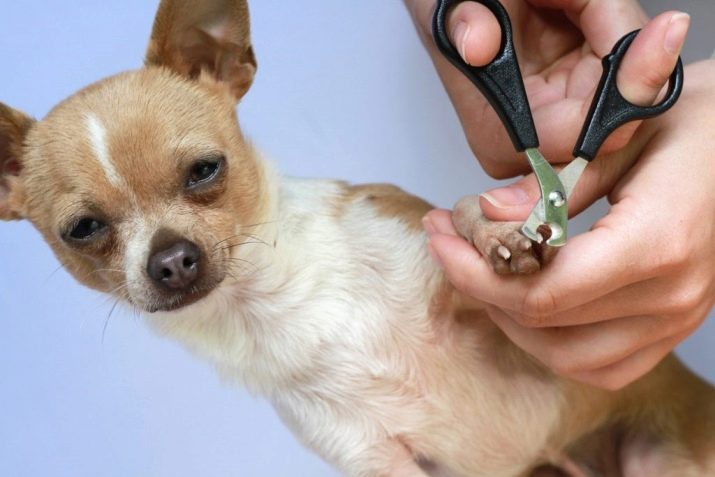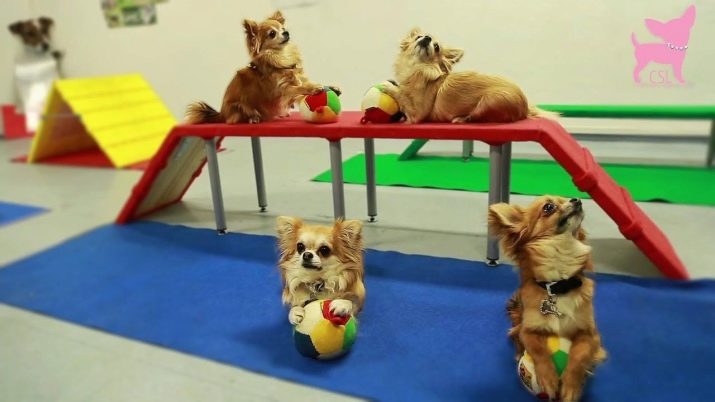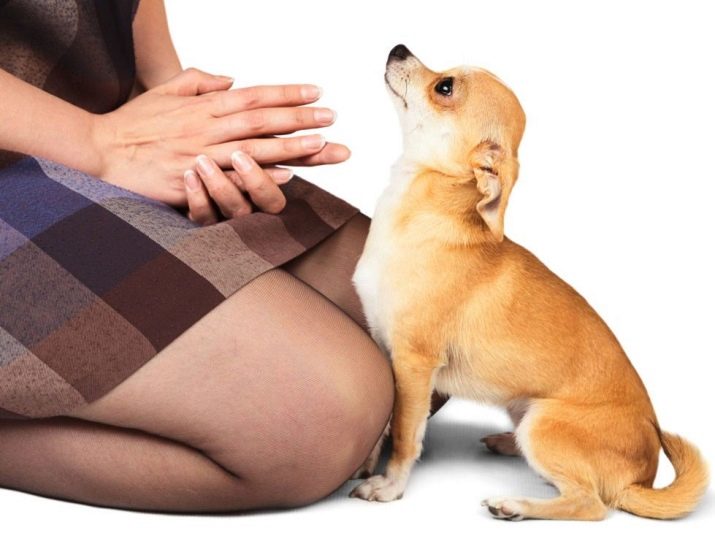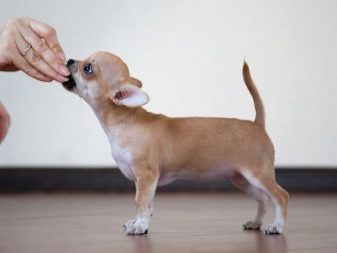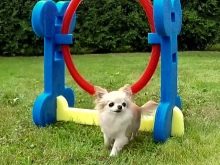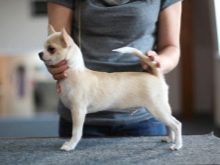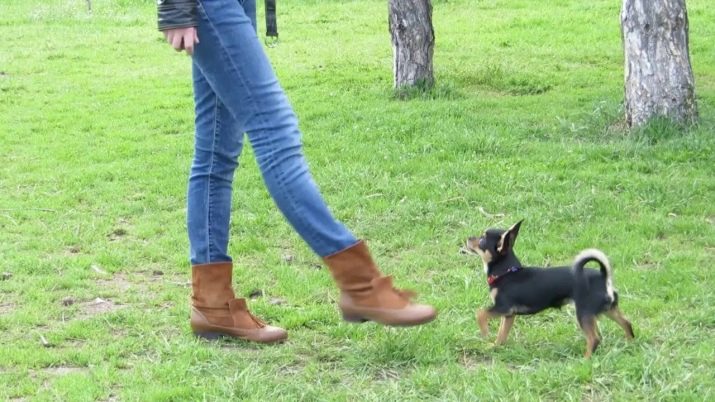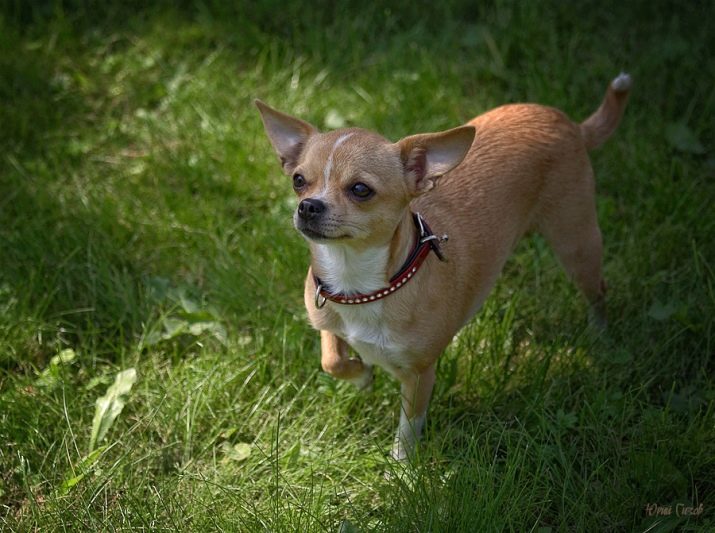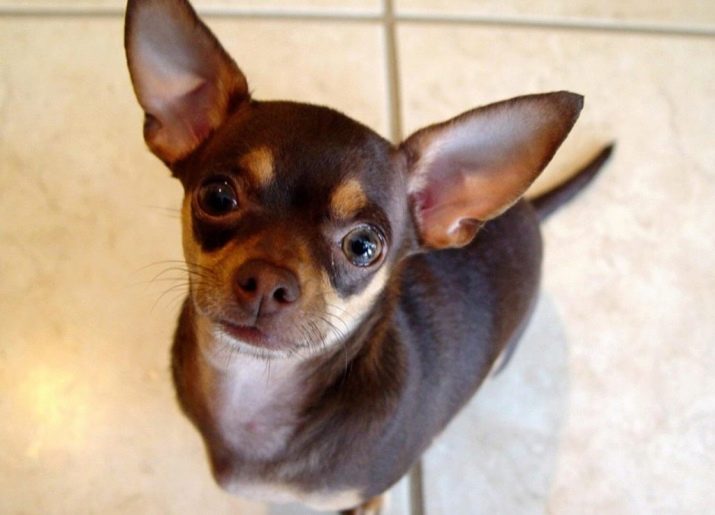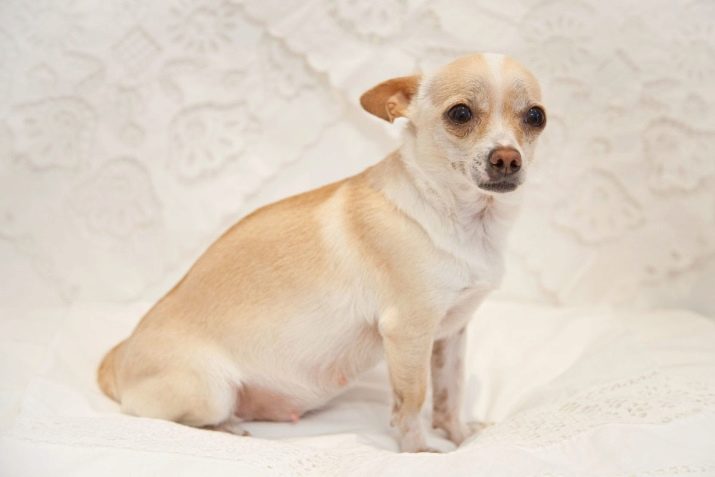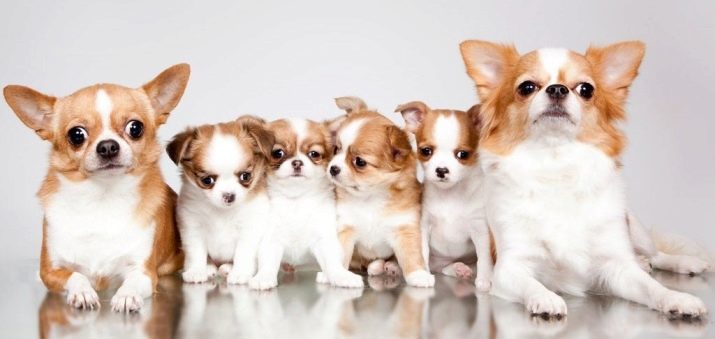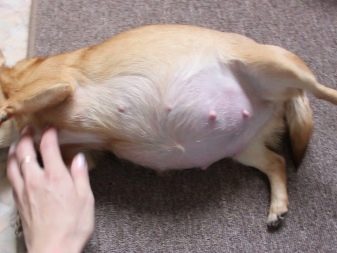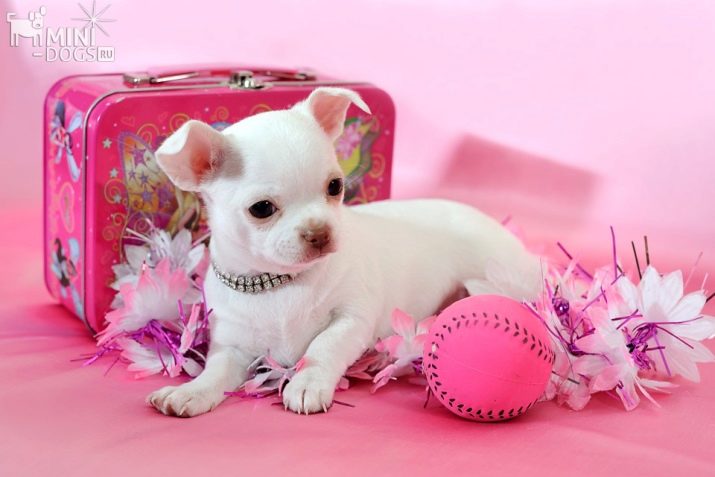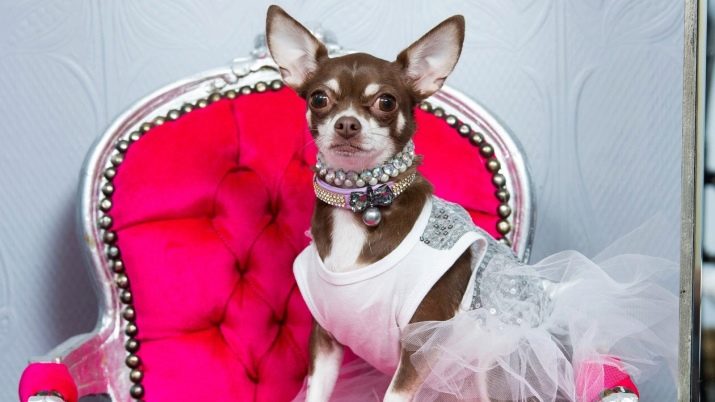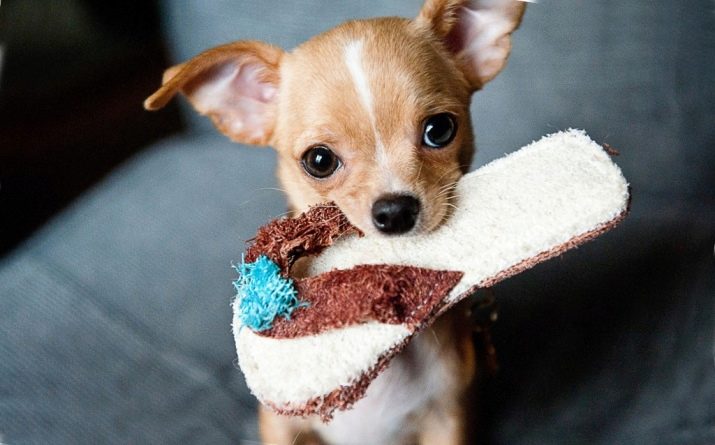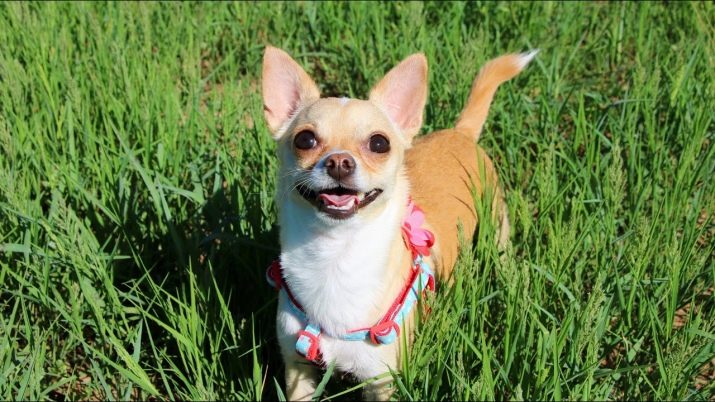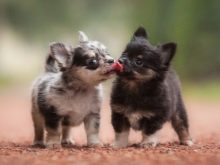The smallest dog in the world has the most famous owners in the world. Stars like Madonna, Britney Spears and Paris Hilton are wearing Chihuahuas in bags. This Mexican purebred dog is more than just a luxury toy.
History of
Although there are various theories about the origin of the Chihuahua breed, this breed is almost certainly derived from Mexico. In the province of Chihuahua in the north of the country still live wild little dogs, reminiscent of purebred chihuahuas.
According to this theory, Chihuahuas belonged to the sacrificial dogs of the ancient Mexicans. People believed that chihuahuas were the guides of souls in the afterlife, so they were often buried with the dead.
These dogs were sacrificed to the gods in order to gain their favor and provide themselves with protection. In one of the monasteries near the city of Mexico there are statues depicting Chihuahua puppies.
During the excavations carried out in the settlements of the Toltec - the ancient tribes who lived in Mexico before the arrival of the Aztecs, many clay and stone figurines were found that resembled Chihuahua dogs. Most of these figures were found on the Yucatan Peninsula in one of the oldest Mayan cities - Chichen Itza. The city was founded around 530 AD. er However, the Toltec dogs were larger than the current representatives of the breed.
In 1850, archaeologists discovered the tomb of an Aztec prince in Mexico. They found a statue of a dog in it, which was very similar to a Chihuahua. She pointed out to scientists the sacred past of this breed.
An interesting theory about the origin of this breed was advanced by Czech dog experts. They claim that in the pre-Columbian period, dogs that were favorites of the rulers of Prague were sent as gifts to the rulers of Mexico. After acclimatization, they became a Mexican breed and are now returning with a new name to Europe. The fact is that in the Czech Republic, very long time there are little dogs with a straight head that look like a Chihuahua.
There is also a theory which says that the Spaniards brought these animals with them during the conquest of Mexico in the 15th century. However, none of the above theories can not be 100% confirmed or fully refuted.
The breeding of small dogs flourished on the South American continent in the 13th century, during the reign of the Aztecs, which almost disappeared after the conquest of Mexico by Cortes in 1520.
The arrival of the conquistadors of Cortes and the end of the Aztec world was also the end of the Chihuahua world. These dogs survived only because of their small size and because the invaders did not realize the religious significance of small dogs and did not destroy them. Only thanks to this chihuahua until the middle of the XIX century remained almost unchanged.
At that time, farmers in the Mexican province of Chihuahua began to sell these small dogs hard in the United States of America. Then their popularity began to spread throughout the world. Tourists were so attracted to small dogs with disproportionately large eyes and ears that they took them with them to all parts of America, as well as to Europe.
At the beginning of the 20th century, the American canine club developed the first breed standard, and in 1923 the first club of its fans appeared. To this day, the dogs of this club are leaders in world breeding.
On the European continent, Chihuahuas appeared after the Second World War.In Germany, the first copies were registered in 1956, in Switzerland and Italy - in 1963.
Today, Chihuahuas are most popular in France, Germany and Spain. And it is not surprising, because it is one of the most interesting and very attractive breeds. Chihuahua is the perfect pet. A characteristic feature of these dogs is that they do not bark.
In 1952, the American Chihuahua Club decided to divide the breed into two varieties: long-haired and short-haired. Long-haired Chihuahuas were crossed with papillon, spitz and Pekingese. The beginning of the short-haired look was laid by crossing with a black-brown terrier. However, to this day it is allowed to cross these species among themselves. At exhibitions they are evaluated separately.
Until the mid-twentieth century in Mexico there was not a single pedigree Chihuahua. They all came from the United States of America.
The British Chihuahua Club was founded in 1952. At first, there were 8 dogs in the stud book. But their popularity grew from year to year. The British experimented by adding other breeds to them.
Although this dog is representative of small breeds, it demonstrates a high ability to adapt to the most extreme climatic conditions. She is equally well in hot Mexico and in Canada and the Scandinavian countries.
Breed description
Chihuahuas are distinguished by an elongated stocky body, a long elastic neck and a head that resembles an apple in shape. On her head she has disproportionately large erect ears, on the face there are large, expressive eyes of a dark color and an upturned nose, which can be of any color: black, pink or beige. Medium-sized tail raised or curled, almost touching the back. The tail can also be lowered in a semicircle down.
An interesting fact is that the breed standard does not provide specific data on the height of the dog at the withers. It is believed that its height should be no more than 20 cm. The size of a dog can be determined by weight. The ideal weight of a chihuahua is between 1.5 and 3 kg. There are individuals weighing from 500 g to 1.5 kg. Among the owners of the most popular miniature dogs.
A distinctive feature of the Chihuahua is a very small height. Comparing the individual lines of her breeding with each other, you can make sure that This is a very diverse breed, and some of its specimens borrowed a great deal from the Pekingese and other breeds.
Chihuahua females can be larger and longer than males, and this is a kind of innovation among dogs, because it usually happens the other way around.
Since a chihuahua has a small head, their jaws are undeveloped and very weak - this affects the bite. The right one should be scissor. However, pincer bite is also common. Recently it became known that the most powerful and reliable grip still gives a pincer bite.
There is also a division of dogs in different colors:
- black monophonic;
- black and white;
- black and tan;
- chocolate;
- tiger;
- sable - light brown or beige flowers;
- purple, blue or reddish.
There are no clear requirements for a particular color. Any colors and combinations thereof, except marble, are allowed.
Character
The ego of this little mexican dog is huge. These pets are happy to be in the center of attention and often try to attract him with barking voiced.
Despite the fact that sometimes chihuahuas are trembling, they are quite brave and even aggressive to other dogs, many times superior to chihuahuas. This dog tends to overestimate his abilities, but his mind and temperament cannot be underestimated.
A typical Chihuahua is a brave, sometimes hyperactive, curious, attentive pet. This is a companion dog, she likes to be close to her master and does not tolerate strangers. Chihuahuas love to play, it is important for them to have constant contact with the owner. In case of danger, these little dogs will not hesitate to protect him, even if they endanger themselves.
The dogs are quite peaceful, but they don't have a good relationship with small children. Chihuahuas try to be away from them, they do not like noise, rudeness and can even bite a child. If a family with children decides to buy a small dog, it is desirable that the children be of school age.
Dogs of this breed are tolerant of other animals at home, but if the owner gives them more attention, they will be jealous.
Chihuahuas are rather spoiled pets. But even outside the convenient owner's bag, they remain full-fledged dogs who love to run around the street and get acquainted with the environment. The exception is rainy and cold weather.
Energetic Chihuahua recommended professional training. This will help prevent some negative points, such as a dog's nervous barking or excessive self-confidence and selfishness. In addition, dogs of this breed are very well trained.
Lifespan
On average, these dogs live 12-20 years. And females, as a rule, live about 1-2 years longer than males.
The life span of a chihuahua is influenced by many factors, such as proper care, the characteristics of the organism inherent in this breed, the prevention of injuries (especially the head) and others. In general, Chihuahuas are considered hardy dogs that do not have serious health problems. Under favorable conditions, you can well expect that your little friend will live a long time, at least according to dog standards.
However, there are nuances that should be paid attention to in order to increase the life expectancy of pets of this breed.
- A 20-year study of canine mortality found that 18% of the causes of death for representatives of the Chihuahua breed are related with cardiovascular diseases. Although heart disease begins relatively late in the life of a Chihuahua (at about 14 years of age), it remains a major factor in reducing the life expectancy of these dogs. The good news is that up to 70% of reported cases of heart disease in dogs of this breed is a mitral valve degeneration. That is a disease that can be prevented with proper nutrition and exercise.
- Hypoglycemia - A condition in which the blood sugar level is below normal. Although visually this is not always immediately apparent, hypoglycemia eventually causes a gradual deterioration of the physical condition. It is very important that the dogs are examined by the doctor when they look lethargic, sleep a lot or are prone to tremor. Early treatment can stop the onset of this disease. Conversely, if left untreated, the life of the Chihuahua will be significantly reduced.
- Other violations, which can reduce the duration or quality of life of your pet - dislocation of the patella, von Willebrand disease, hydrocephalus and retinal diseases (take care of the prevention of eye diseases and prevent the appearance of tears in time)
To increase the lifespan of your pet, you need to consider several factors.
- A healthy diet is your number one weapon in preventing cardiovascular pathologies. Chihuahua dogs often ask for delicious "human food." In this case, it is important to show firmness. Make sure your little buddy gets nutritious and well-balanced dog food, and keep unnecessary goodies to a minimum.
- Dogs need daily walks. But the distance and their intensity should be much less than what is required for a larger dog.
- Because of its miniature size, dogs may need the help of a veterinarian during childbirth.
- In connection with a certain anatomical feature of the chihuahua's head structure, in which many dogs do not completely grow the bones of the skull (formation of a spring), any head injury can lead to sudden death. Therefore, it is advisable not to allow your pet to communicate closely with larger dogs.Also, do not take the dog to a family where there are small children. They may accidentally injure a dog.
- Prevention is better than cure. Make sure your furry companion undergoes a health check every year and that he receives all vaccinations (vaccinations against leptospirosis, parvovirus and canine flu are especially important).
- Chihuahuas are prone to problems with their teeth. Persistent oral health problems can lead to infection, and, consequently, increase the likelihood of fatal diseases.
- Finally, sterilization offers many benefits. It reduces the risk of cancer, reduces aggressiveness and minimizes the likelihood of a dog escaping from the house.
With proper care, the average lifespan of Chihuahua dogs is quite long. Your little pet has a very good chance of longevity, but it depends primarily on you.
Varieties
As mentioned above, there are long-haired and short-haired Chihuahuas. The long-haired has a soft, long hair, smooth or slightly wavy, hairy ears and a lowered tail.
Short-haired Chihuahua has a short thick fur, which gently fits to the body. It happens even so short-haired individual that it can look like bald.
Often there are mixed types in which it is not easy to determine what kind of dog belongs to. Nevertheless, they also have all the characteristics of the breed and are worthy of the love of their masters.
A deer-headed chihuahua is a dir, a somewhat less popular breed. The head of such a dog is elongated, the muzzle is narrower. In addition, the body of the dira is relatively elongated. Unlike their fellows, these dogs have longer limbs. It is also important that dirov fewer genetic problems than other species of the breed. This makes them the healthiest dogs among all Chihuahuas.
Chihuahua with an apple-like head got its name due to the shape of the skull, which has similarity with the apple. Such chihuahuas are most often taken as a pet. At exhibitions, a well-pronounced, rounded head in the shape of an apple is the main requirement for the breed, which is considered when determining the true representative of Chihuahua. Like most species of this breed, their coat color varies.
Dogs of this subspecies often suffer from hydrocephalus. Their eyes are bulging from their sockets. If you plan to buy such a dog, be sure to check if it has hydrocephalus.
One of the exotic subspecies - the so-called "Dog in a cup." This category includes Chihuahuas, which have a length of less than 23 cm and a weight of less than 2.3 kg. This dog looks and behaves the same way as his big brothers. The only thing that distinguishes it is size.
The significance of belonging to a particular species is determined only from an economic point of view, because in our country short-haired Chihuahuas are less common and, therefore, more expensive (on average, about 10-30%). If you want just such a dog, then it will be much more profitable to purchase it from a foreign breeder.
Content
Nutrition
Manufacturers offer a wide range of dog food. There is a dry and wet food, food for puppies and adult dogs. You can buy a regular, organic or gluten-free feed. Also, the choice is presented with special foods that take into account the peculiarities of the animal's health.
Finding the best feed for your dog among the many options available is no easy task. The more difficult because Not every member of Chihuahua can eat the same way. In the end, the appropriate diet consists of many factors, such as age, weight, level of physical activity, gender and the health of the dog.
The first factor that determines the quality of food is ingredients listed on the label. Good food should contain large amounts of animal protein and, therefore, meat.After all, even such a small dog is primarily a predator. Its digestive system is adapted to the digestion of meat and bones.
Also, raw meat is easily digested. Grain components of the dog are poorly digested, especially in large quantities. Moreover, wheat often causes allergies in dogs. Also in feed for chihuahua there should be no sugar.
Other important ingredients are vegetables that are needed to get a dog vitamins. When choosing food you should pay attention to the above values of vitamins and minerals. Often, manufacturers supply their food with additional portions of vitamins, which can lead to overdose.
Dry food is more economical and contains less fat than wet. Wet food may contain more preservatives, but it also contains more moisture, so when feeding with dry food you should pay particular attention to the Chihuahua drinking regime.
It is more reasonable to combine dry and wet food in the dog’s diet, but not during one feeding. The dog digests wet and dry food at different rates, their combination can cause indigestion.
A good alternative can be dishes of fresh raw meat and vegetables. Their advantage lies in the fact that they contain all the natural vitamins and minerals that are often lost in the production process of conventional foods.
The type and type of food should be selected based on the individual needs of the pet and the conditions of its daily life. In case of doubt, it is recommended to consult with the breeder or veterinarian.
Health
Chihuahuas are considered dogs that are hardy and do not have serious health problems. However, there are nuances that should be paid attention to.
- One of the features of this breed is the characteristic tremor of the body. It is found in both long-haired and short-haired dogs, although they are not prone to catarrhal diseases.
- Because of its small size, dogs need help from a veterinarian in obstetrics.
- Another feature is that a spring does not grow in the dogs. The soft hole, as a rule, diminishes with age, but it requires a lot of attention and care.
- It is necessary to take care of the prevention of ophthalmologic diseases, as well as to prevent the appearance of tearing in time.
- It is also necessary to monitor the growth of teeth in young dogs and prevent the formation of tartar.
- Care for the long-haired chihuahua requires regular brushing. Cleaning short hair can be limited to occasional brushing with a rubber brush. It is also recommended to bathe the dog using a special shampoo several times a year or as the fur is contaminated.
- Dogs of this breed have a genetic propensity for neurological and anatomical anomalies (dislocation of the patella). It is necessary to look after the dog while walking.
- Due to low body weight, claws do not wear out as quickly as they should. Once a month you need to cut the claws.
Despite their diminutive size and apparent fragility, dogs are characterized by good health and disease resistance. They often live to be 16 years old. On average, their life expectancy is 10 - 18 years. -
To maintain the health of the dog, it is recommended that it be regularly examined by a veterinarian.
Living conditions
The Chihuahua is a dog unsuited to life on the street. She feels better at home. Therefore, in cold weather, it is necessary to wear a sweater, for example. Because of its size, do not leave it unattended in open spaces, as it may become a victim of other animals. And if you don’t put a muzzle on a dog, a collar with a leash is a necessary thing.
Chihuahuas do not like moisture. Baths they can organize several times a year, but also need to take into account the individual characteristics of the dog (the tendency to wallow in the mud).For bath use special shampoos for short-haired or long-haired dogs, which are usually recommended for the Chihuahua breed.
Due to their low body mass, their claws do not wear out as quickly as other breeds. But trimming too long claws is still necessary. This procedure improves the comfort when running a dog.
Training
All reputable trainers agree that chihuahuas are as trainable as other dogs. They are very smart, curious, the learning process gives them pleasure. Especially if you take into account that classes are held in a company with a beloved master.
To achieve good results of training and satisfaction from the process must take into account the characteristics of this breed. For example, dog size, character, age. It should also comply with the regime of the day pet.
Working with a dog in the process of learning new skills is a great way to establish contact with her and strengthen relationships. Further learning simple tricks will further strengthen this connection.
It has been verified that chihuahuas can easily perform the same tricks as larger dogs. To teach a chihuahua to sit on a team, to give a paw (hello), to roll over, you need enough practice and patience. She may well learn a much longer list of stunts.
The main thing is to start training gradually. with simple tasks. First you have to teach Chihuahua to perform simple tricks. This will lay the foundation for more complex teams and for a strong relationship with her. Chihuahuas are often underestimated due to their size, but they are incredibly smart and love working for food.
Before you do any simple tricks, you need to make sure that the dog is already under the power of simple obedience, for example, the command "sit", "place" and "me." Without these basic chihuahua skills, it will be difficult to learn how to perform more complex stunts.
Show the dog how to perform this or that action, you need in the form of a game. This can be done by encouraging good behavior and proper performance of the trick in a tasty delicacy. The optimal training time for a puppy should not exceed 15 minutes.
Having mastered the basic principles of obedience, such as "Sit", "place" and "lie", Chihuahua is ready to master other simple commands. You can start with almost any trick, but “give me a paw”, “spin” and “crawl” are some of the most fun.
To get started, you do not need too much, you only need to have:
- quiet place to work;
- delicious dog treats;
- a word meaning praise, for example, “well done” or “yes”;
- a little patience.
If the family take an adult dog, you need to take into account many factors. Perhaps a chihuahua has never been trained in a previous home or she may have bad habits. Dogs can cheat and hide their “troubles” if they have been severely punished in the past. Or, on the contrary, they can shamelessly indulge in the very eyes of new owners, if the previous owner has never conducted their training.
Encouragement involves something good for a little puppy when he does the right thing, and ignoring bad behavior. Chihuahuas pay close attention to the reactions of their owners and are more likely to repeat the action if they receive a lot of praise and love for it.
When the kid on the street goes about his business in a suitable place, you need to praise him immediately. Timing is very important, so it is not recommended to praise too soon or too late. As soon as the Chihuahua finishes his job, you need to praise him and stroke him. He will begin to associate verbal praise and physical attachment with a walk to the street. Since the baby wants to make his master happy, he will try to repeat this action.
Some trainers offer treats to dogs during training to the tray, but this is not always a useful strategy for Chihuahua training.Even if edible delicacies are a type of encouragement, the dog may begin to associate food with going to the bathroom or begin to abandon the toilet in the right place without refreshments.
Breeding
Chihuahua's unique appearance - its small size and more proportionally large head, ensured its popularity throughout the world, but also caused some health problems.
Selection, which determines the state of health of dogs, was often aimed at creating individuals with even larger ears and a shorter muzzle, which led to increased eye sensitivity, problems with breathing and teething.
Other health problems were due to the fact that the breeders tried to get the dogs smaller and smaller. Individuals weighing only 500 g cannot defend themselves against infections or other diseases, while ordinary Chihuahuas have natural resistance, as evidenced by the fact that they survived on the streets of Mexico.
Unnaturally small members of the breed often get sick and die prematurely. Even at first glance, invisible viral diseases, manifested by diarrhea or vomiting, can endanger the life of such a dog.
Chihuahuas are still dogs that are fashionable to carry everywhere with you in your purse. Therefore, there are still non-professional breeders who are counting on quick profits.
Non-compliance with the rules of breeding and refusal to prevent diseases lead to the breeding of the Chihuahua breed with hereditary diseases. These include congenital abnormal bite, premature loss of teeth, problems with heart valves, hydrocephalus, or dislocation of the patella.
To reduce the risk of these diseases to a minimum level, a potential buyer of a dog of this breed should be interested in purchasing an individual only from a certified professional breeder. She will have all the pedigree documents and all the necessary vaccinations. It should be understood that The prices for purebred dogs, especially Chihuahua breeds, are high - serious breeding entails a lot of costs.
However, investing in a puppy from a good nursery usually proves beneficial because it prevents the possible subsequent costs of treatment and, of course, the suffering of the pet. It is also a guarantee of many years of joy from being in the family of such a cute pet. A professional breeder with extensive experience is always ready to advise the owner.
Today you can buy chihuahua short-haired and long-haired. Long-haired Chihuahuas are twice as numerous as short-haired dogs, despite the fact that the latter is considered to be more viable and strong.
Each specific type of dog has its own characteristics that the breeder must know before participating in the breeding program. Chihuahua is a very popular breed of dogs, therefore it requires a lot of care and knowledge.
The breeder is obliged to follow the best practices when breeding Chihuahuas in order to select the best representatives of the breed.
In one of the scientific articles described that some of the ancestors of Chihuahua had a head that resembles a deer, while others had skulls in the shape of apples. Some breed lovers have also hypothesized that the “deer” head of a chihuahua may occur due to the crossing of a chihuahua and a Chinese crested dog. Modern breeders are focused on breeding chihuahuas with an apple head, as this type is currently being popularized and recognized by the American canine club.
The Chihuahua breed, like other miniature dogs, tends to puberty earlier than larger breeds. As a rule, it is about 6 months old. Like any other breed, female chihuahuas should never be bred in the first two or three estrus, because their fertility is then not high enough for a successful pregnancy.
Frequent crossing of dwarf dogs is not recommended, as the body of a small female is not hardy enough to cope with frequent pregnancies. It is important to pause so that the dog's body is strong enough.
Male chihuahuas should be used for breeding as soon as they mature, usually at the age of one or two years. It is worth waiting until the puppy is fully grown to assess whether it is a good sample for use in breeding.
The average size of a litter of Chihuahua puppies is from 1 to 3 puppies. Rarely a bitch of this breed gives birth to more than 4 puppies.
To assume how many puppies a chihuahua can bring, you need to understand that in dogs the size of the litter depends on many factors: the fertility and size of the female, the quality of the sperm of the male, their diet, health, etc.
Although chihuahuas tolerate pregnancy and childbirth fairly well, they may require obstetric care. Despite the fact that newborn puppies are very small, there are certain structural features of the female's body. It's related with a tiny dog pelvis size. In addition, a very small chihuahua uterus may not open enough during childbirth, therefore, an emergency cesarean section may be required.
It is important to agree with the veterinarian on the possible operation. In most cases, especially with a small number of puppies, expected during childbirth, natural birth will occur without problems, but the breeder’s job is to prepare for non-standard situations.
It is important that both dogs are completely healthy before mating. Dogs should not have pathologies, chronic diseases. You need to make sure that they meet the standard.
Popular nicknames
Choosing a name for a dog is very important for its owner. Dogs are often given names from cartoons, films, TV shows and books - Astra, Beethoven, White Fang, Thunder, Droopy, Eddy, Goofy, Lucky, Hooch, HuckelbErry, Fan, Lampo, Lessi, Madison, Odie, Pankracy, Lightning, Pluto, Rex, Ren, Rin, Tin, Saba, Scooby Doo, Snoopy, Soccer, Bib, Toto, Tramp.
Many take the nicknames of famous dogs - Balto, Barney, Barry, Benji, Boo, Boss, Dyok, Wave, Like, Snoopy.
Chihuahua nicknames often give the following names: Fafik, Bubble, Bambi, Amor, Bax, Coco, Mick, Buba, Posy, Timon, Pimpek, Rocky Nurja, Mickey, Ada, Gloria, Linda, Silva, Elsa, Tina Posi.
For puppies of girls take the following nicknames: Punia, Bella, Belle, Blueberry, Snowflake, Moon, Selene, Pusya, Fiona, Star, Violuna, Nick, Fredzya, Juli, Tuptusia, Nana, Rake, Sweet, Junya, Amy, Mika, Bobusia , Lola, Kitka, Sue, Sarah.
For puppies of boys - Rocky, Mel, Nor, Fresh, Megan, Jean, Kesha, Britt, Brut, Gab, Sab, Busia, Funia, Russia, Savaly, Jess, Bert and others.
Of course, there are no strict rules when choosing a name for your new friend. It is desirable that it be concise, sonorous and reflect the individuality of the dog.
Owner reviews
According to the owners, chihuahuas are very active, self-confident and snooty dogs that often try to show their courage during a walk.
Some believe that this breed has no flaws, others think that loud barking, hyperactivity, aggressiveness are its main flaws.
Yet most owners agree that Chihuahuas:
- dogs that do not require special care, but need constant attention;
- very unpretentious and convenient breed, it can be carried everywhere with itself;
- This is a wonderful pet and loyal friend who is ready to follow the owner anywhere;
- This is a very clever, playful and affectionate dog that loves to learn new things.
About 10 interesting facts of the Chihuahua breed, see the video below.
